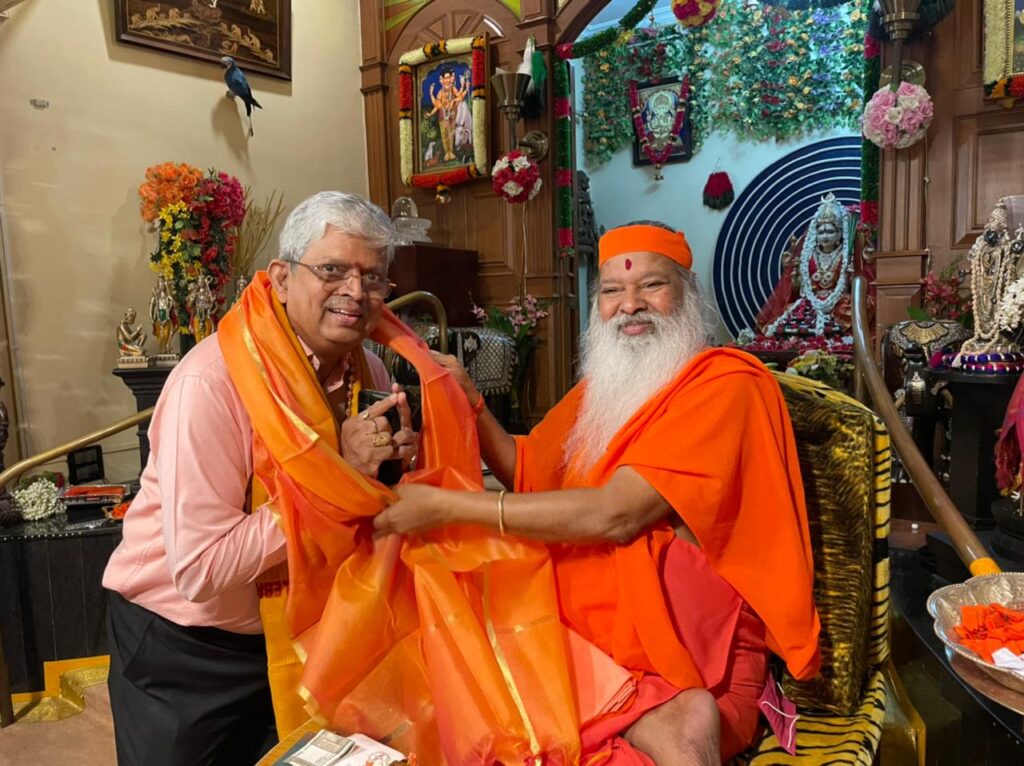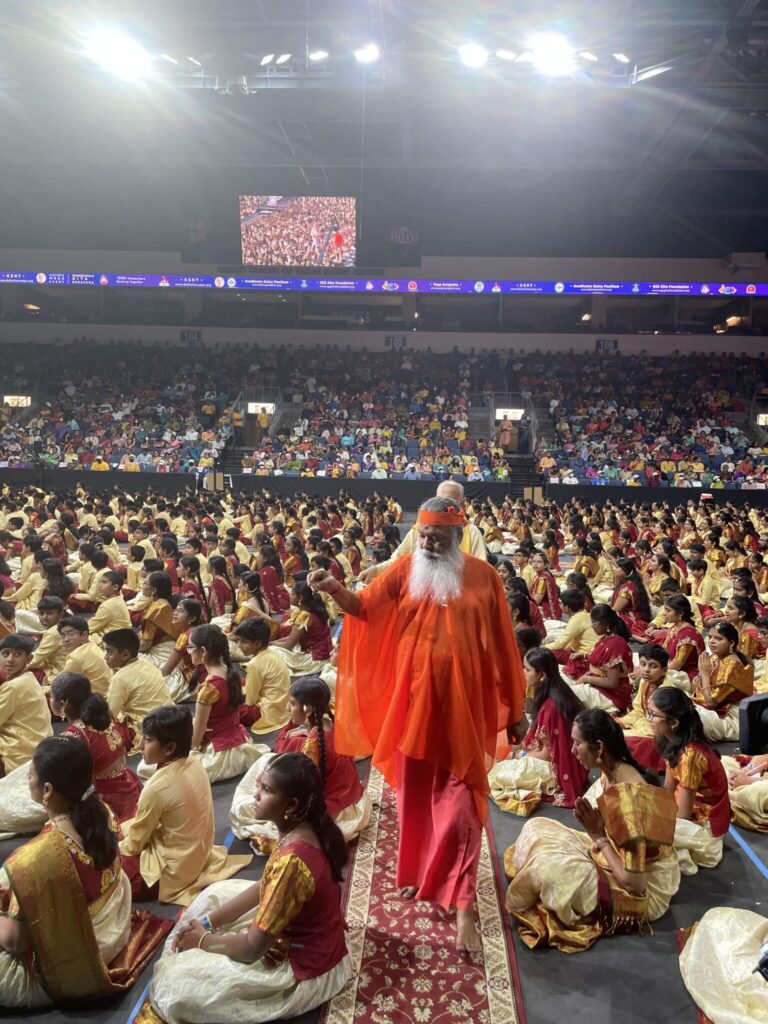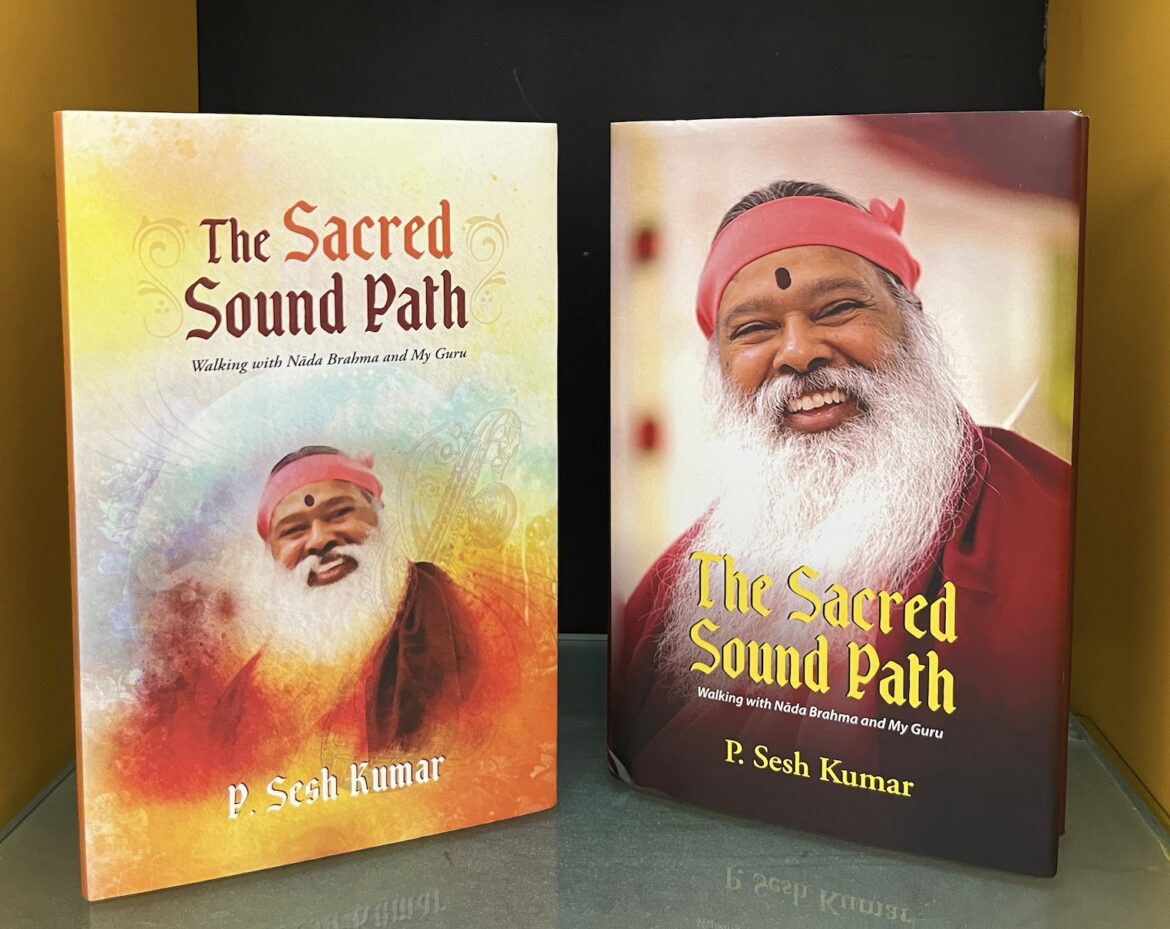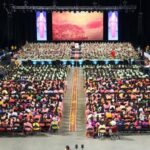“The Sacred Sound Path: Walking with Nada Brahma and my Guru,” authored by P. Sesh Kumar, a former senior officer of the Indian Audit and Accounts Service, will be formally released on May 26, 2025, at the Avadhoota Datta Peetham in Mysore, India. The launch coincides with the 83rd birthday celebrations of His Holiness Sri Ganapathy Sachchidananda Swamiji.
The book, which becomes available on Amazon starting May 20, 2025, chronicles the spiritual journey of Sri Swamiji and explores the transformative power of sacred sound.
“How do you write about a mystic who doesn’t just speak, but sings, heals, and transforms through divine sound? How do you explain a life that dances between the rational and the miraculous, the measurable and the mystical?” These were the questions Kumar faced as he set out to write the book.
Known for his acclaimed earlier work, “CAG – Ensuring Accountability Amidst Controversies: An Inside View,” Kumar describes this new book as an effort to explore how Nada Brahma, the ancient Indian principle that Sound is God, continues to find resonance in the modern world through the life and mission of a living Avadhoota, that is Sri Swamiji.
Speaking to South Asian Herald, in an exclusive interview, Kumar emphasized “I was trained to value logic, evidence, and measurable truth. But life has a strange way of orchestrating its own music. Mine began to change when a cassette of devotional songs landed in my hands in faraway Nagaland.”
That unique experience marked the beginning of a profound transformation that would lead him to Sri Swamiji, whom Kumar describes as one of India’s most extraordinary spiritual masters. “I write not as an expert or a preacher, but as a witness to the power of sacred sound, and the grace of a Guru who embodies it,” he stressed.

He clarified that the book is not a “Hagiography. Nor is it a spiritual diary in the usual sense,” but rather a bridge between two worlds: one of governance and spreadsheets, and the other of breath, sound, silence, and grace.
Sri Swamiji, Kumar noted, is far from a conventional spiritual teacher. Born under mystical circumstances in a modest village and raised by a spiritually awakened mother, he walked the path of self-mastery long before public recognition came his way.
“He defies definition. He is at once a seer, a healer, a global ambassador of Sanatana Dharma, a musicologist, a tree-lover, and a tireless visionary whose work spans continents, communities, and causes,” he added.
Central to Sri Swamiji’s mission is a “radical idea,” that sound heals, “not metaphorically or symbolically, but literally,” according to Kumar. Through more than 3,000 bhajans composed in multiple languages and his pioneering Raga Ragini Vidya concerts, where specific ragas are linked to physical and psychological benefits, Sri Swamiji demonstrates that sacred sound is not an ancient relic, but a living force for transformation.
From prestigious venues such as the Royal Albert Hall, Carnegie Hall, and the Sydney Opera House, to remote tribal villages in Chhattisgarh, Sri Swamiji has used music as medicine and mantra as method, he added.
Kumar pointed out that scientific research is beginning to affirm what Sri Swamiji has practiced for decades. He references neuroscientist Daniel J. Levitin’s work on how sound influences brain chemistry, emotional states, and immune responses. “What modern laboratories are now confirming, Sri Swamiji has demonstrated for decades,” he said.
Practices like Nāda Chikitsa (healing through sound) and Datta Kriya Yoga (a breath-based system for inner balance) illustrate how Sri Swamiji’s teachings sit at the intersection of ancient wisdom and contemporary relevance.

“This book is also a deeply personal account of my own transformation, from a skeptical bureaucrat to a witness of grace,” Kumar shared. “I had no background in mysticism. I wasn’t raised in devotional traditions. And yet, through a series of events that some might call coincidence but I can only describe as divine choreography, I found myself drawn deeper and deeper into a world where miracles are routine, and silence speaks volumes.”
Kumar recounted large-scale chanting events organized by Sri Swamiji, such as mass recitations of the Hanuman Chalisa and global renditions of the Bhagavad Gita, including performances in Chicago and Frisco, Dallas. These events drew participants from across the globe.
“These are not just spiritual spectacles. They are acts of collective healing, infusing the air with a vibrational signature that touches even the most hardened of skeptics,” he said.
He further highlighted Sri Swamiji’s international presence, which includes Ashrams and Datta temples in Trinidad, Frisco, Dallas, Baton Rouge, London, and Kuala Lumpur. He also cited Guinness World Records for mass chantings, a world-class bird aviary, and a bonsai garden promoting ecological consciousness and meditative stillness.
“These are not vanity projects. They are living monuments to what I call consecrated action, a blend of will, vision, service, and surrender,” Kumar emphasized.
Among Sri Swamiji’s most compassionate initiatives are those that serve the differently-abled: music therapy for children with autism, programs for the visually impaired, and outreach for neurodiverse youth, all based on the philosophy that every soul is divine and that sound knows no barriers.
The miracles Kumar documented in the book aren’t always “dramatic.” “Sometimes they manifest in the way a tune silences a restless mind, or how a breath technique dissolves old traumas, or how a volunteer, who has never spoken in public before, stands up and delivers flawlessly at a global event,” he said.
“I have seen impossible timelines met, monumental projects completed with neither corporate funding nor institutional backing. And each time, I am reminded: this is not project management. This is divine orchestration,” he expressed.
“Why does this matter to a global or Western audience?” Kumar posed a question and answered, “Because anxiety is a global pandemic. Because disconnection, distraction, and discontent have become the dominant notes in our daily lives. Because even in the land of mindfulness apps and Spotify playlists, something vital is missing.”
The Sacred Sound Path extends an invitation to everyone, not to adopt a foreign faith, but to listen inward. It speaks to seekers, skeptics, scholars, and spiritualists alike, offering a view into how India’s oldest wisdom systems are not only surviving but actively reshaping the modern world.
“I did not set out to convince anyone. I only wanted to bear witness. To say that I saw this. I experienced this. That in a world obsessed with outcomes, here is a life rooted in inner outcomes, peace, clarity, transformation,” he clarified.
In an increasingly noisy world, Kumar says this book is his attempt to share the music of the soul, not his own, but that of a Master who plays no instrument, yet tunes lives. Who conducts no orchestra, yet aligns entire communities in sacred harmony.
“And so I offer The Sacred Sound Path not as a treatise, but as an invitation. To listen, not just to music, but to the silence behind it. To breathe, not just air, but awareness,” Kumar reflected. “And perhaps, if you’re fortunate, to hear that most subtle of all sounds—the Anāhata Nāda, the unstruck sound, which Sri Swamiji transmits not through technology, but through presence.”






